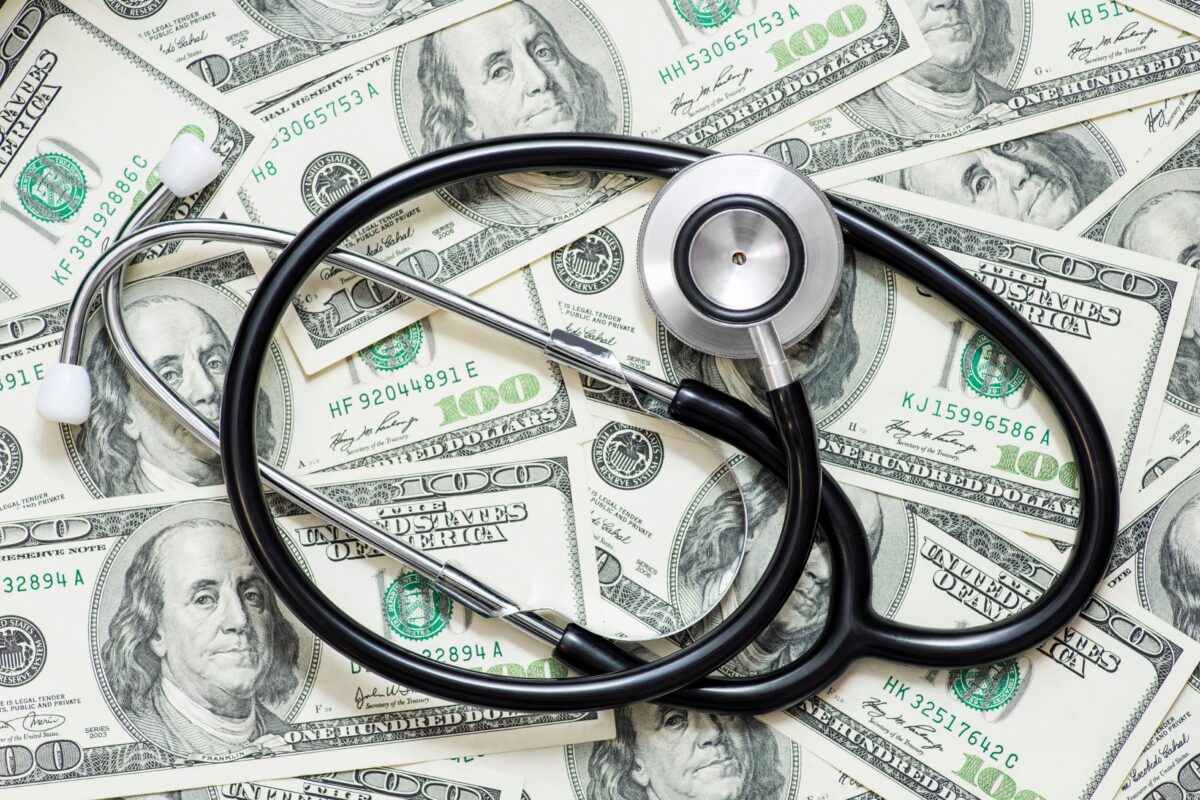


Federal officials made more than $247 billion in improper payments in 2022, with more than half of the total—$132.4 billion—coming in five major Medicare/Medicaid programs in the U.S. Department of Health and Human Services (HHS), according to a June 2023 analysis by non-profit government watchdog Open The Books (OTB).
The $247 billion for 2022 was the second-highest annual improper payment total since 2004 when such expenditures first began to be documented. The two-year total of $528 billion spanning President Joe Biden’s tenure is the highest ever.
To put the magnitude of wasted tax dollars into perspective, OTB calculated that the government spent $20.5 billion per month, $683 million per day and $474,305 per minute on improper payments.
Payments are considered improper if they “should not have been made or were made in an incorrect amount. Funds can be improperly dispersed because the federal agency had wrong information, couldn’t access information it needed, because the law wasn’t followed, because states didn’t provide the information needed, and more,” according to the OTB analysis.
Among the perennial sources of improper payments are checks to dead people.
“Dead people received $532.5 million in 2022 and $441.7 million in 2021 in mistaken payments. Federal retirement services [pensions]—old-age, survivors, and disability insurance, and Social Security were sent to dead recipients,” the OTB analysis said.
The two-year total for all improper payments would almost certainly have been even bigger were it not for how officials responded to the COVID-19 pandemic.
“This apparent decrease between Fiscal Year 2021 and Fiscal Year 2022 comes with an important caveat. In some cases, improper payments are only considered to have decreased because federal agencies lowered or removed spending requirements, giving more flexibility during the COVID-19 pandemic,” according to a February 2023 audit from the U.S. Government Accountability Office.
“This includes postponing eligibility determinations for people receiving funds and reducing requirements around provider enrollment and re-validations,” according to Open The Books (OTB), the Illinois-based non-profit research group that specializes in using Freedom of Information Act (FOIA) at all levels of government to make public as much official spending of tax dollars as possible.
More than 55,000 FOIA requests were filed last year by OTB in the non-profit’s effort to make “every dime online in real-time.”
In addition to hundreds of studies of federal spending, OTB has also posted the spending of all 50 state governments and multiple major metropolitan areas.
The Medicaid portion of Medicare with $80.5 billion was found by OTB investigators to have the most improper payments among the HHS programs; followed by Medicare Fee-For-Service (Parts A and B) at $31 billion; Medicare Part C with $13.9 billion; and Medicare Part D at $1.4 billion.
Another $4.5 billion in improper payments were found in other Medicare programs.
The second highest improper payments total was found at the Small Business Administration (SBA) where 2021’s total of $671 million exploded to $37.3 billion as a result of the lax spending controls on two key Pandemic initiatives—the Paycheck Protection Loan Program and COVID Economic Injury Disaster Loan program.
Both of the loan programs issued billions of dollars worth of n0-questions-asked checks, according to the analysis.
The Department of the Treasury’s improper payments total was third highest at $25.9 billion, followed by the Department of Labor at $19 billion, and the Department of Education at $15.7 billion.
While the federal government began tracking improper payments in 2004, it was during President Barack Obama’s tenure in the Oval Office that significant efforts were launched to identify the causes and implement preventative measures, according to OTB founder and Chief Executive Officer Adam Andrzejewski.
“By executive order and law, Obama worked to decrease improper payments, and their trajectory illustrates the effort put forth in his first term. But later, these wasteful payments began adding up again and have reached a crescendo under President Biden.
“It could not come at a worse time, as he spends massive amounts under the Inflation Reduction Act, and the American Rescue Plan,” Andrzejewski told The Epoch Times.
“Furthermore, the nearly quarter-trillion dollars in improper payments from 2022 do not include some mismanaged Covid aid funds.
“Programs like Temporary Assistance for Needy Families and SNAP were considered ‘risk-susceptible’ and reported no improper payments at all. That means the true total of improper payments was far higher last year,” he said.
The OTB analysis comes after the Associated Press reported on June 12 that “fraudsters potentially stole more than $280 billion in COVID-19 relief funding; another $123 billion was wasted or misspent.
“Combined, the loss represents 10 percent of the $4.2 trillion the U.S. government has so far disbursed in COVID relief aid. That number is certain to grow as investigators dig deeper into thousands of potential schemes.”
Government officials who claim there is little room to cut the federal budget should read the OTB analysis, Andrzejewski said.
“If elected officials are looking for new ways to curb spending, they could do worse than looking at these hundreds of billions that simply require more attention to detail. In other words, federal agencies need basic in-house accounting controls,” he said.

